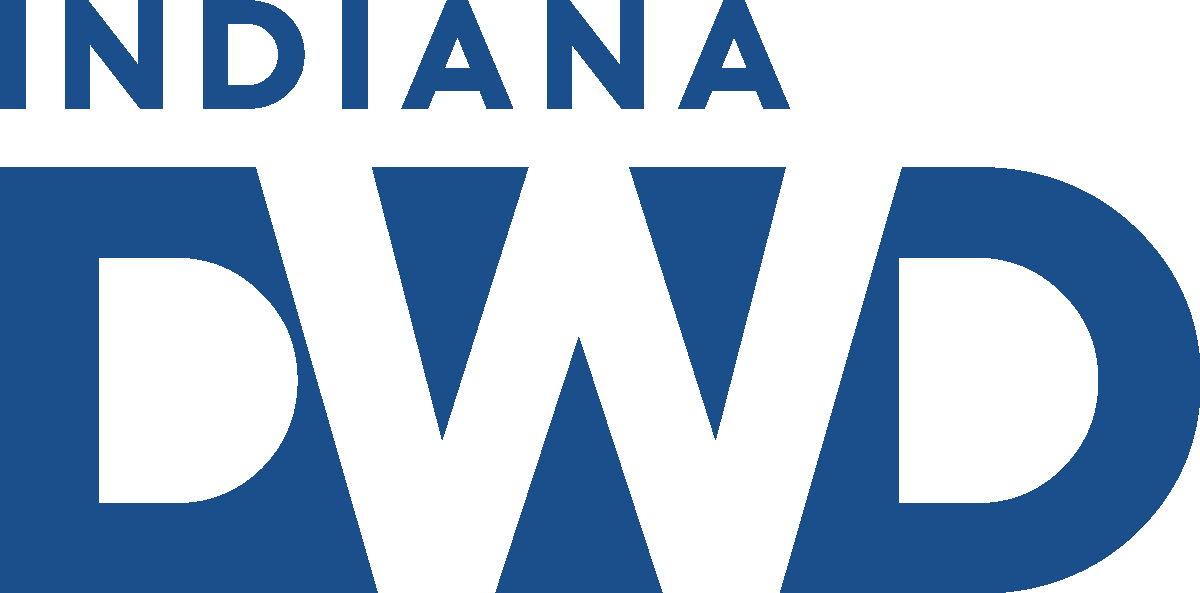About DWD
Indiana DWD – Who We Are
The Indiana Department of Workforce Development (DWD) strengthens Indiana by understanding workforce needs, aligning resources, and providing access to services that empower Hoosiers to thrive in an ever-changing economy. By helping to ensure economic security and better employment outcomes for all Indiana residents, the state government agency prides itself on acting with integrity, accountability, and respectfulness while continuously striving to support employers, as well as guide and upskill job seekers.
The Past
Congress paved the way for a system of state public employment services when it passed the Wagner-Peyser Act June 6,1933. The newly established network, which was jointly financed by states and the federal government, resulted in an almost immediate opening of employment service-related offices in some of Indiana’s largest cities.
During its first full year of operation in 1934, the Indiana State Employment Service (ISES) recorded 105,929 job placements--27,720 of those in private employment. One year later, the ISES, in cooperation with the U.S. Bureau of Labor Statistics, started collecting data on employment, payrolls, and hours, which established the groundwork for what would become an increasing role in the field of labor market information.
On March 3, 1936, the Indiana General Assembly passed the state’s Unemployment Compensation Act which led to the creation of the Indiana Unemployment Compensation Division (IUCD) in the State Department of Treasury. Soon thereafter, the ISES was transferred from the State Labor Department to a section within the IUCD.
Unemployment benefit payments were first made in April 1938. Eligible workers reportedly earned approximately $10 per week at that time.
With full-time field offices totaling 25 in 1940, the agency integrated employment service and unemployment compensation functions before seeing benefit payouts increase to a maximum of $16 over a 16-week period in 1941.
Claims and benefit payments spiraled upward as a result of World War II and as a result, benefits were raised to a maximum of $18 weekly for 18 weeks in 1943 and then to $20 a week for 20 weeks in 1945.
Indiana unemployment numbers steadily declined early in the 1950s as the state’s economy grew until a two-month shutdown of multiple steel mills during June and July of 1952 led to a dramatic increase in statewide claims.
Five years later, the maximum weekly benefit amount increased to $33.
By January 1958, the agency was receiving 100,000 unemployment claims per week. At that time, administrative sections of the Division were housed in three Indianapolis locations—141 South Meridian Street, the Ruddell building on East Georgia, and the State Office building on West Washington Street.
From the time during which benefits were first payable in 1938 until 1958, Indiana’s population increased by more than one million and the state’s workforce nearly doubled. By April 1, 1958, the agency had paid out nearly $388 million in state unemployment insurance benefits and almost $81 million as an agent for several federal programs.
The Present
Today, with more than 900 of its own employees, DWD is a resource for many things from career exploration to career education and training. In fact, through multiple programs, DWD helps Hoosiers with services related to areas such as High School Equivalency, Adult Education, and even industry-specific certifications.
The Indiana Jobs for America’s Graduates program (JAG), administered by DWD, is a resiliency-building workforce initiative that helps Hoosier high school students with significant barriers to graduation learn in-demand employability skills and receive career exploration and coaching experiences. JAG Indiana has served 40,000+ Hoosier youth and graduated more than 95 percent of its students from high school since its inception in 2006.
DWD’s Adult Education programming, with a presence in all of Indiana’s 92 counties, is consistently ranked among the nation’s best in multiple adult education-related categories.
DWD is also committed to helping veterans find quality employment. Through a statewide network of WorkOne career centers, military veterans are offered help with a variety of services.
